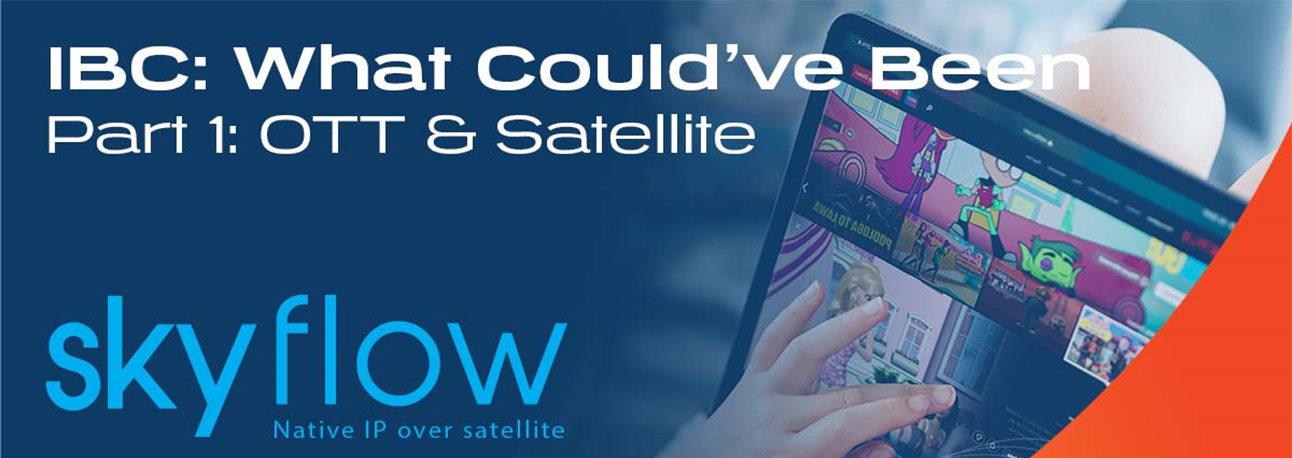After getting into the swing of in-person events again and the feeling that a degree of normality had returned, it was a blow to receive the news that IBC was cancelled. As with every event, there was a great deal of work put into it and every company that was affected will be hugely disappointed. We were certainly looking forward to seeing our partners, customers and industry colleagues in Amsterdam.
So we’ve decided to bring you a blog that showcases what we were going to talk to our customers and partners about at IBC. It’s not quite the same, but we hope you find it just as informative!
Our theme at this years IBC was going to revolve around Satellite and OTT. This has been a core focus for ST Engineering iDirect in 2021 and this will continue into 2022. The way that we consume content is changing, and this is resulting in new expectations and therefore new challenges being placed on providers.
New trends bring new challenges
As Internet Protocol (IP) video is increasingly becoming the new normal for entertainment seekers, factors such as website demand, internet traffic and latency can affect service delivery. In addition to being able to stream their content on a range of devices, consumers expect to receive their content on-demand: at any time, at any location and with uninterrupted playback. As OTT is a unicast service, meaning each device used in a household for streaming is considered a separate stream, all streams need to be delivered with unique requirements.
Providing the connectivity for streaming services, including live content such as sports and news coverage, has many challenges. For instance, ensuring the required amount of bandwidth must be efficient and, equally, sound traffic management and minimalization is crucial to ensuring unblemished streaming.
Latency issues and congestion can also be caused by the provider’s authentication system, which puts even more pressure on the overall network. This can cause frustration for the viewer. With an average customer tolerance duration of 90 seconds when subjected to low-quality streaming, the effect can be detrimental.
Adding to that pressure on the network has been the unprecedented demand for OTT services during the pandemic. Strain on many networks and streaming platforms became particularly evident. Delivering such an amount of individual streams presents a challenge, not just to the last mile, but to the backbone too. Network overload can cause huge issues like service blackouts, and bandwidth strains are likely to rise with hungry applications like 4K.
To keep pace with this rising demand for content, it’s crucial that service providers are able to deliver it both seamlessly and cost-effectively.
Satellite & OTT
Ok, so satellite and OTT haven’t normally been paired together but they are actually a perfect fit for one another. This is a message that we have been reiterated some time now. We know what satellite is capable of. It can resolve challenges faced by telcos and OTT service providers such as offload congested networks, scaling to serve new subscribers and extending coverage to hard-to-reach areas. This year, we proved it. We joined forces with EKT, Broadpeak and EasyBroadcast to showcase the world’s first end-to-end demonstration of Native IP using GSE or MPE encapsulation during a DVB Project event. The demonstration proved that satellite can deliver OTT content anywhere and to any device. We call it SkyFlow. And it’s a true gamechanger. You can watch the live demo here.
How does OTT over Satellite work?
Our Head of Media & Broadcast, Hans Massart explains how traditional video service providers like DTH operators can enrich the delivery of mABR (multicast Adaptive Bit Rate) content using a traditional modulator but also how OTT content can be delivered using a VSAT platform.
Impact
What impact will Skyflow have for both service providers and users? What applications does it serve? Here, Mohsen Haddad – CRO and co-founder of EasyBroadcast gives details on the use cases that can be fulfilled through the solution.
Monetization
SVOD as a business model using an existing VSAT platform, how can it be monetized and what are the benefits in terms of QoE?
Even though we sadly missed IBC, we hope this blog has given you some insights into the story we wanted to tell. If you are interested in learning more about Skyflow, please reach out and stay tuned for updates.
Book your meeting with a ST Engineering iDirect representative during the event.
Stay tuned for our next IBC; What Could’ve Been installment on remote production.
